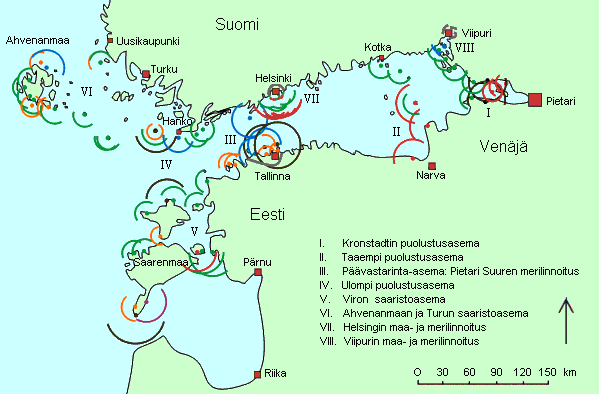Thanks for the clarification with Finnish tanks!
Some additional info about Finnish airplanes (imported in 1920s-1930s) I found (mainly for myself as I don`t know quite many about Finnish aviation of 1930s

, but the info will be interesting for other not-Finnish forummembers here also, as I hope):
1. In 1920s Finns used 8 Czech light bombers/reconnaissance biplanes
Aero A-11HS, in 1929 they were replaced with more modern
Aero A-32, equipped with French-produced Bristol Jupiter IV engines. Sixteen (AEj-49 - AEj-64) Aero A-32 were bought and used by Finnish Air Force till 1944 (as Aero A-32GR). In 1930 Finns unsuccessfully tried to replace Bristol Jupiter IV engines with Italian Isotta Fraschini Asso Caccia. In 1939 10 A-32GR were still in service.
2. French bomber/reconnaissance biplanes
Breguet Br.XIV formed the backbone of Finnish Aviation Forces for several years (1920-1927). Finland acquired 20 Breguet 14 A2 aircraft in 1919 and also over two hundred (221) used Fiat A-12bis engines from French surplus stock. The first 4 aircraft arrived to Finland in July 1919, in 1921 ten more aircraft were bought, followed by 8 next year. So Finns used 38 airplanes of this type.
See
http://kotisivu.mtv3.fi/skoiv/Avhist/Br ... guet14.htm for details
3. One of the most famous and powerful foreign airplanes in Finnish service was British two-engine medium bomber
Bristol Blenheim I, 18 were bought in June 1937-July 1938. Those bombers for Finland had special suspensions for Swedish and American bombs, and was equipped with obsolete radiostations Marconi R-12/R-14. In April 1938 Finland bought a licence for the Blenheim native production at the new State air factory in Tampere, but there was no production till 1941.
Those Blenheims (tactical numbers BL-104 - BL-121) were used very widely during the Winter War as bombers, but more often as reconnaissance planes. Finnish engineers reequipped the bombers with the skis and special heated cowling for propellers. On 30 November 1939 Finland had two squadrons of Blenheims (9 in LeLv 44 and 8 in LeLv 46) as the part of the 4th regiment (LeR 4) in Luonetjärvi.
Some examples: On 1 December 1939 three Blenheims from LeLv 46 bombed Soviet tanks and trucks at Tsalki and one Blenheim was brought down by AA fire. The first air combat took place on 14 December 1939 when single Finnish Blenheim (BL-105) successfully could avoid the damage from the two attacks of 3 Soviet I-153 and disappeared in winter fog, using full speed........... On 20 December 1939 three Blenheims from Lelv 46 bombed Soviet artillery units on their way to the front at Saamajärvi-Tulemajärvi and detected several Soviet attacking I-16 very late. All three bombers were heavily damaged, but could reach their airfields with the help of cloudy weather. One I-16 was brought down (by the tail gunner of sergeant Morski`s bomber). Blenheims were quite vulnerable for AA fire, and on 24 December 1939 LeLv 44 had only 3 Blenheims (from 9 on 30 November 1939) - 4 were brought down by AA fire and 2 were heavily damaged.
4. Also British biplane fighters
Bristol Bulldog IVA were used very widely by Finnish Air Force in 1935-1944, 17 were delivered (BU-59 - BU-75). Finnish order was the last for Bristol company, then the production of Bulldog fighters came to end. Finland received two Bulldogs Mk.IIa from Sweden as advanced training fighters in the end of 1939 also (which were received on 15 December 1939, and coded BU-214 and BU-216). The Swedish Air Force called the Bulldog for J7 (J=jaktflygplan which means fighter) and used twelve between 1931 and 1940.). Finnish Bulldogs (MkIVa) were equipped with Bristol Mercury VIS.2 engines, also some had skis. On 7 November 1938 the Finnish Bulldogs were transferred to LeLv 26 (based at Heinjoki) of Lentorykmentti 2 (2nd Flying Regiment). Those obsolete for 1939 fighters were used by Finnish pilots quite successfully during the first weeks of Winter War (LeLv 26 had 10 Bulldogs and since 6.12.1939 the squadron under the command of captain E. Heinilä fought with about 5 to 7 Bulldogs. The squadron moved on 6.12 to Mensuvaara and three days later on to Käkisalmi).
The first contact between Soviet aircraft and Finnish fighters happened on 1 December 1939 when 6 I-16s jumped a Bulldog pair of LeLv 26. While the other Bulldog got separated, BU-64 piloted by flight sergeant Toivo Uuttu was left alone to the combat. He could damage one I-16, but himself was also shot down and crashed at Muolaanjärvi. Damaged I-16 also crashed and became the first aerial victory over Finland.
On 23 December a patrol led by lieutenant Pentti Tevä took off on an interception mission towards Lake Ladoga, where it encountered 13 SB-2. Pentti Tevä and Lennart Mildh succeeded in downing one each of them.
On 25 December a formation of 40 SB-2 escorted by 12 I-16 approached to bombard Käkisalmi. A swarm of Heinilä’s Bulldogs took off in defence and shot down one I-16 while the bombers managed to escape.
On 28 December the detachment moved with 5 Bulldogs to Immola and on to Parola. On the last day of 1939, the unit moved to the ice-covered Lake Littoinen for protection of the city of Turku (Åbo) in Western Finland.
To be continued................
Also any notes/additional interesting info about the use of imported airplanes by Finnish Air Forces in 1920s-1930s are very welcome.
Thanks in advance, BIGpanzer

